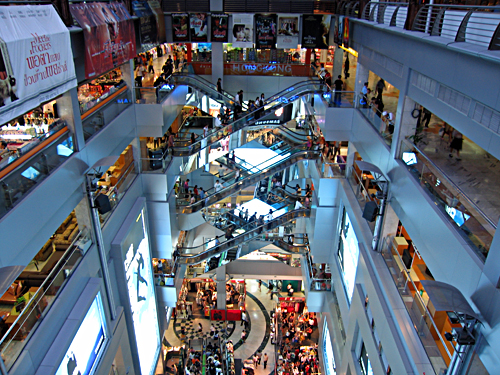
The following article was my stand for an environmentally conscious debate on "The Mall Culture in India".
The Mall Culture: A Boon
The Wall Street Journal recently headlined India with the caption, “Ready, Set, Go!” That sentiment has been around for quite some time now. ‘India Rising’ is more than a term; it’s a feeling, a vibe and now visible action that we’re quickly getting familiar with.
Things are finally happening. We’re buying vegetables from air-conditioned glass shelves, simultaneously choosing between brands from different continents and will soon have nuclear power. In this drive to development, things go from awe, to attraction, to habit. And the mall culture in India is one of those things that are habits in the metropolitans while still rouse awe in smaller cities.
Now, the mall culture is symbolic of something very significant – a change that could take the world by storm. India had always been a bearish workforce. But the retail boom in the country proves a change in trends. We are doing exactly what America did. We are changing lanes into becoming capitalists – a bullish economy. And emergence of the mall culture facilitates the realization of our greatest strength – our sheer numbers. The spread of the retails boom and mall through out the country, even in Tier 2 and 3 cities supports the idea of India becoming one of the largest markets of consumption. So people we were working for are now taking notice and working for us. Hence there is more investment from abroad and the subsequent growth.
That was pure global economics. Let’s zoom in a little more. Reliance Fresh was almost inaugurated by stones pelted by the hands of the small-scale grocers it had replaced. Similarly multi-storied malls attract the business away from small-scale retailers. So what? It’s better to adapt to change than to be overcome by it. The sector whose business suffered was that which had refused to change. By opposing malls and large-scale operation we are opposing growth and betterment. The provision of more comfort, utility and a pleasant environment for recreation while still winning on prices is the mall culture’s USP.
What would have made an entire market, haphazard in nature and covering kilometers is condensed well into the attractive 20,000 sq. feet of a mall. It supports systematic development, saving of space and land, provides a better atmosphere, lower prices and an outlook of change which wins consumer satisfaction and so every one is happy.
To say that the mall culture is against the environment would be a farce. Malls are usually located in city outskirts, thereby diffusing the load inside the city in terms of traffic, noise, commotion and pandemonium. It converts that atmosphere into one with soothing instrumental music and underground parking. Gurgaon is a perfect example of what the mall culture is capable of. What earlier comprised barren land and a few factories, today is one of the most systematically developed and rich cities in India, thriving on its malls and subsequent land rate.
The mall culture is a boon. I could almost call it economic charity. It is an industry that brings order into cities, dramatically improves the market environment for both buyers and sellers, is one of the best things that happened to India and the common Indian and yet makes money out of it. To term such a phenomenon as a bane on miniscule grounds would be to obstruct natural growth and progress. The mall culture represents a change – and well, change isn’t necessary, but then neither is survival.




